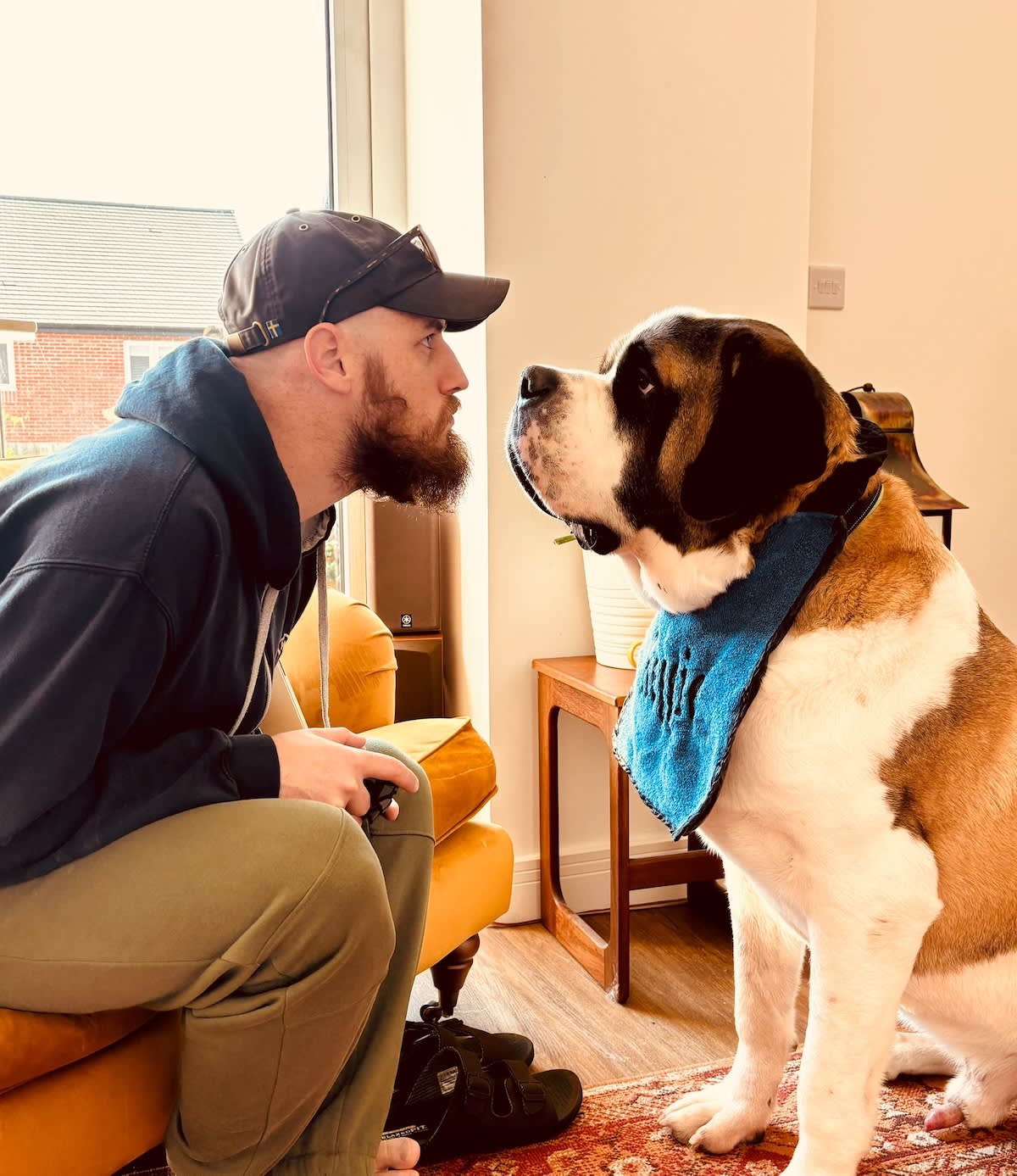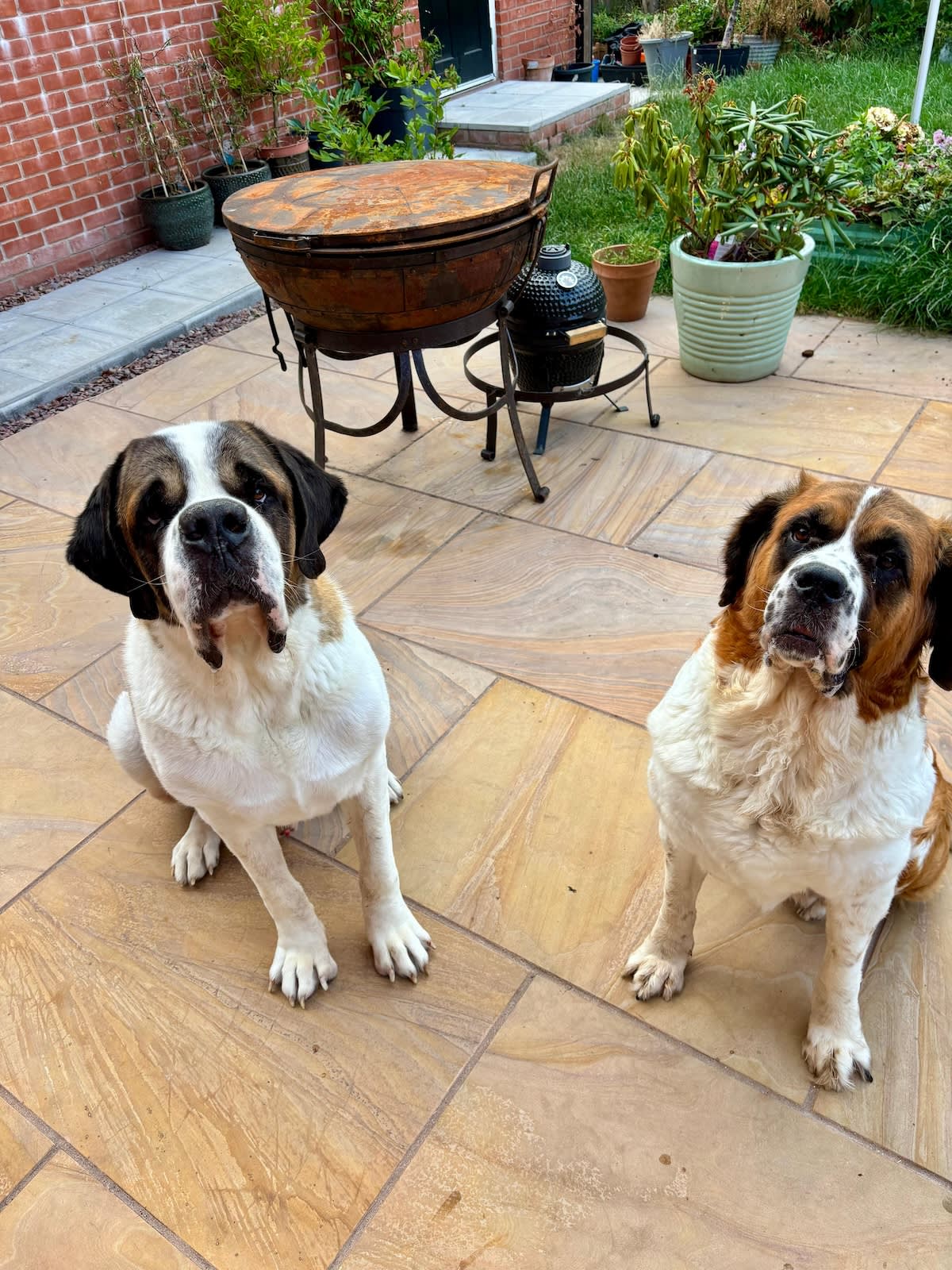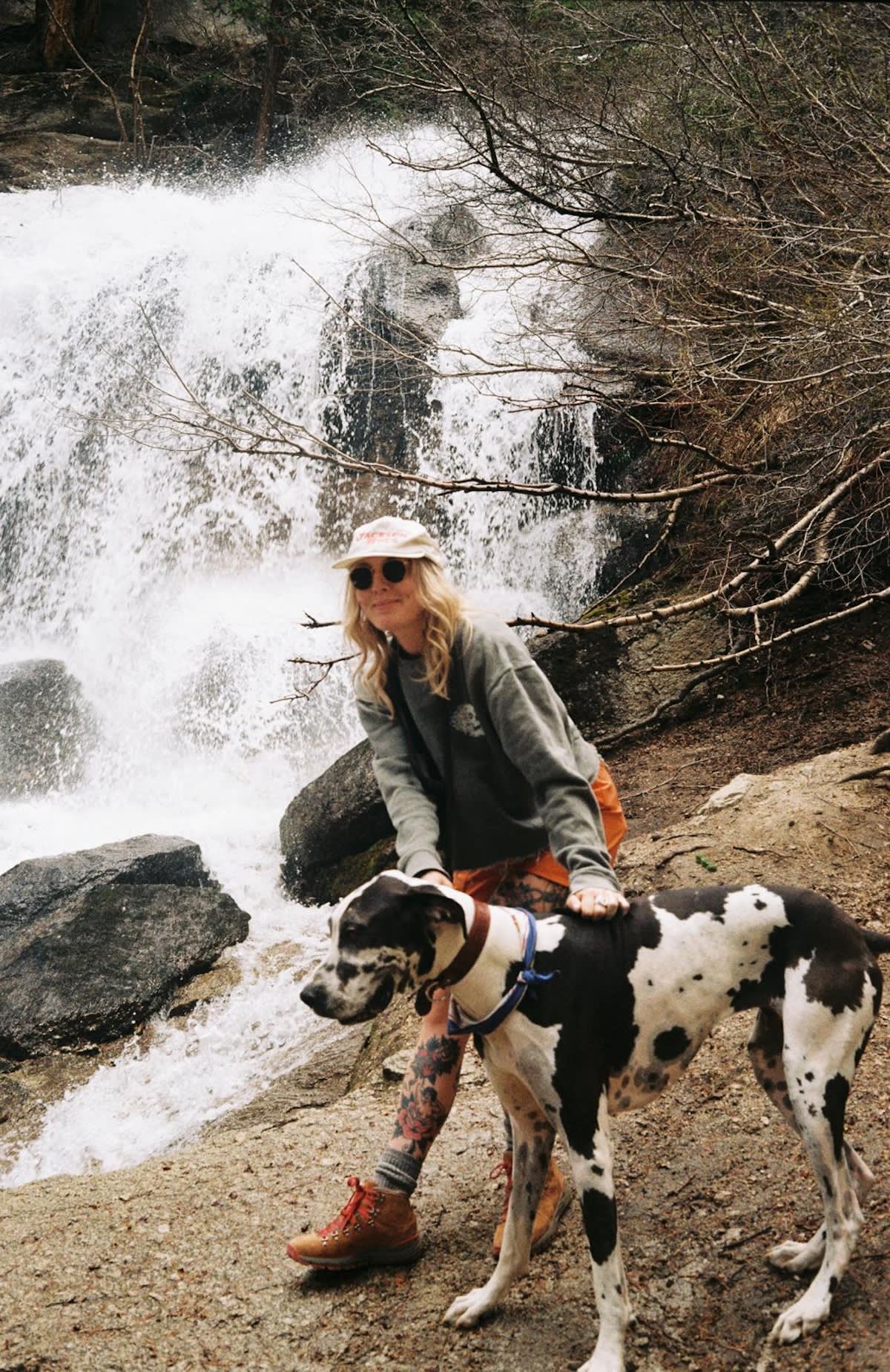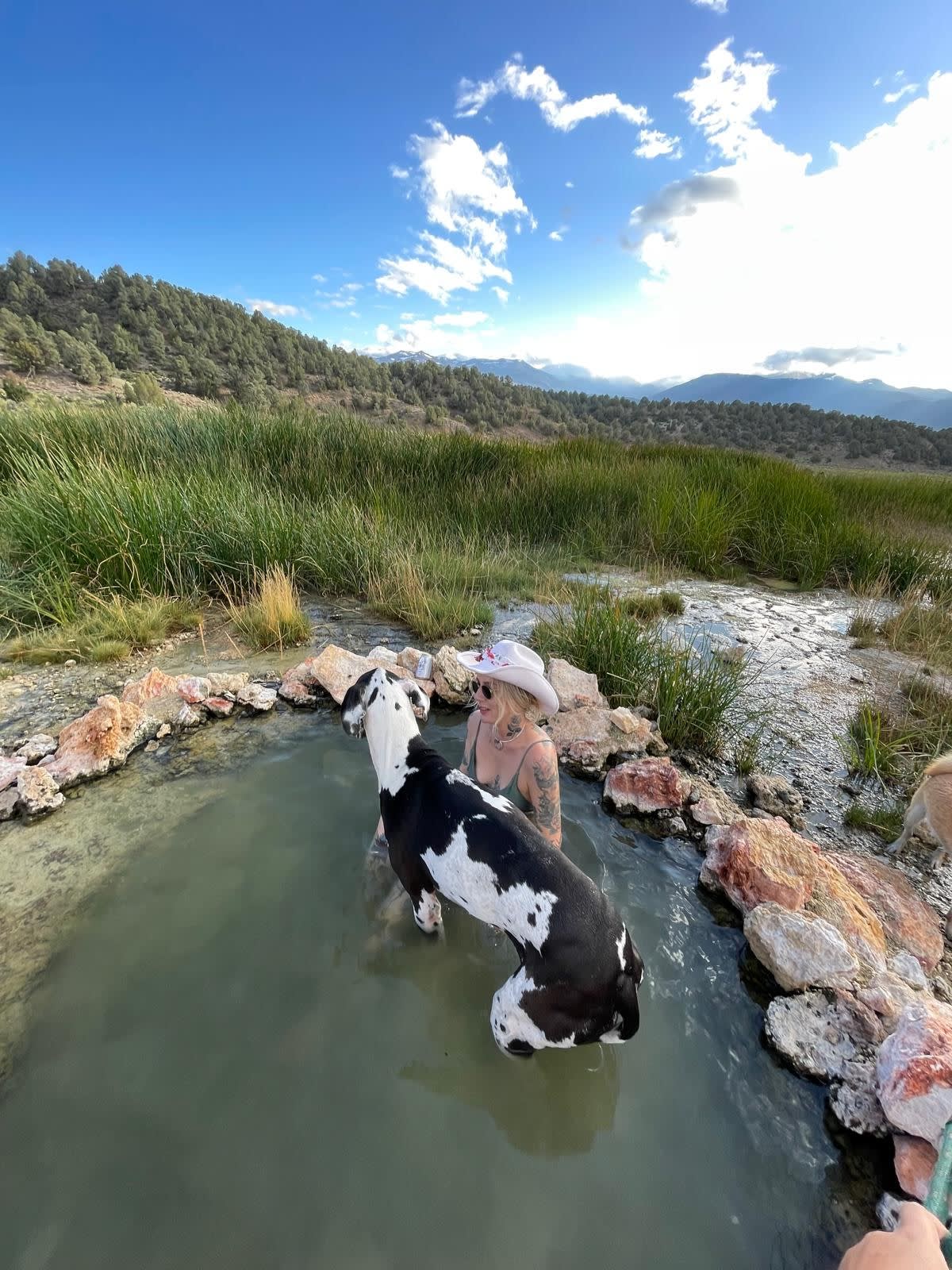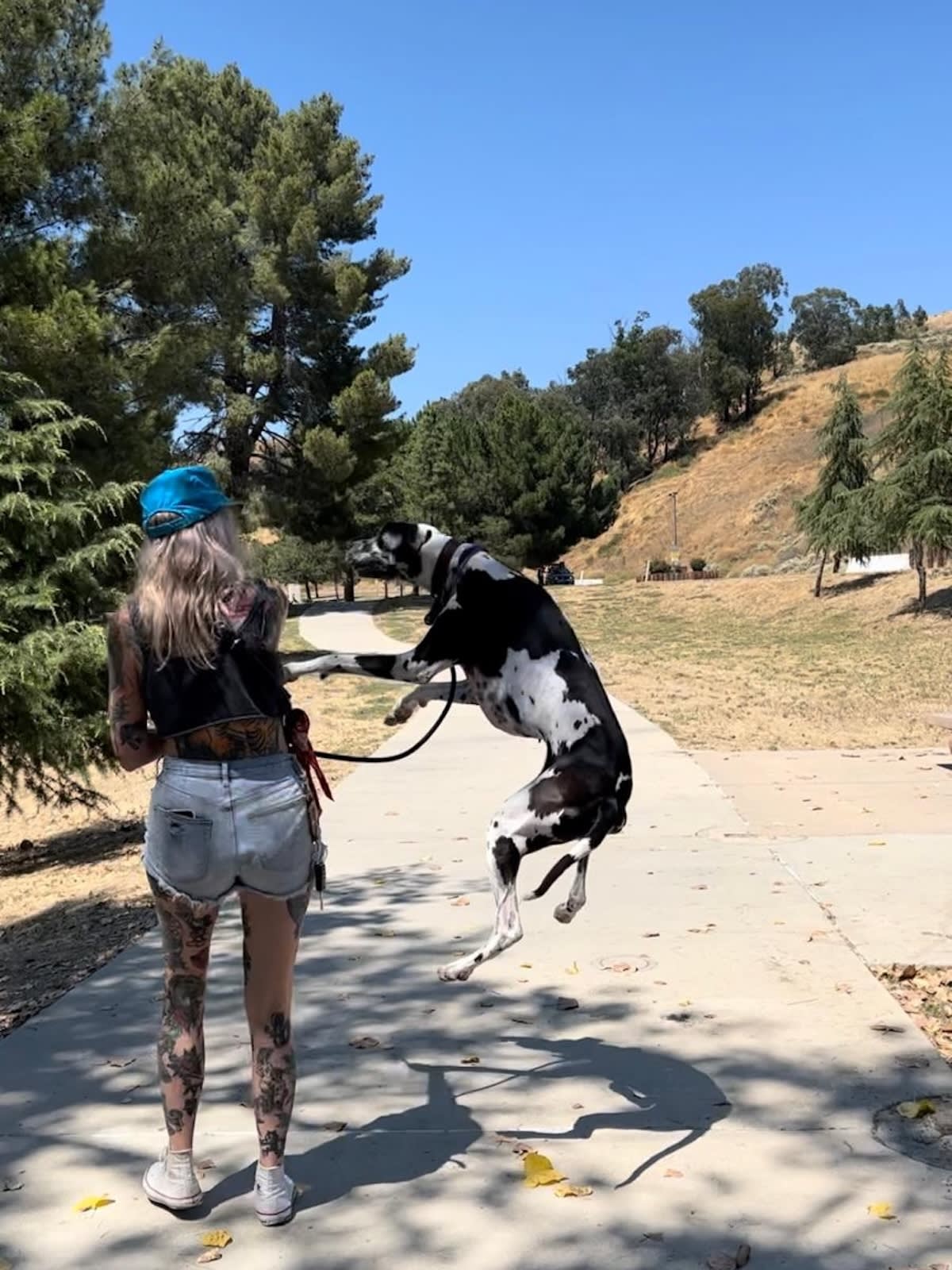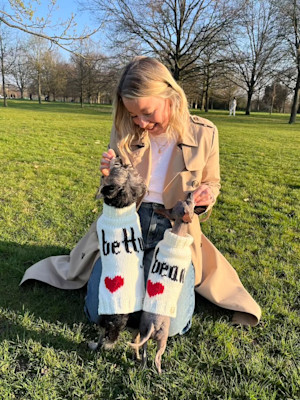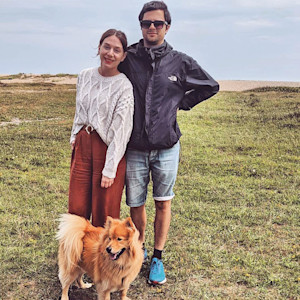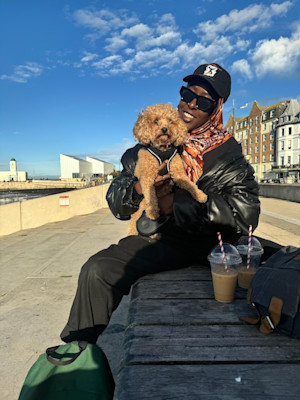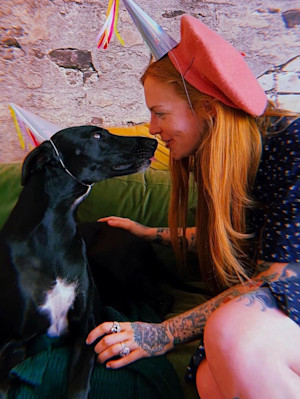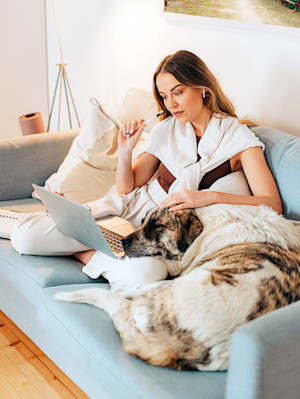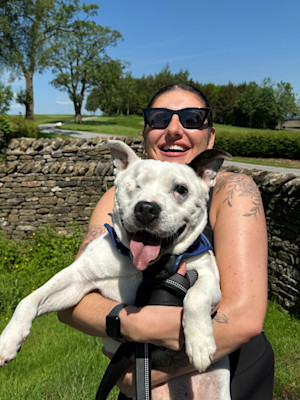More to Love! Meet The People Sharing Their Lives With Giant Dogs
“It’s like walking around with a celebrity”

Share Article
Imagine sharing your house with a dog who weighs more than you. A dog who can put their head on the table and rest their paws on your shoulders so they’re taller than you. Yep, the dogs you are about to meet are all biiiiig girls and boys – an Irish Wolfhound, two St Bernards and a Great Dane – weighing from 40kg up to almost 90kg. Ahead, we chat to their pet parents to find out about all their antics – from just how much they really eat to how people react when it’s time for walkies…
“He’s like a fictional character”
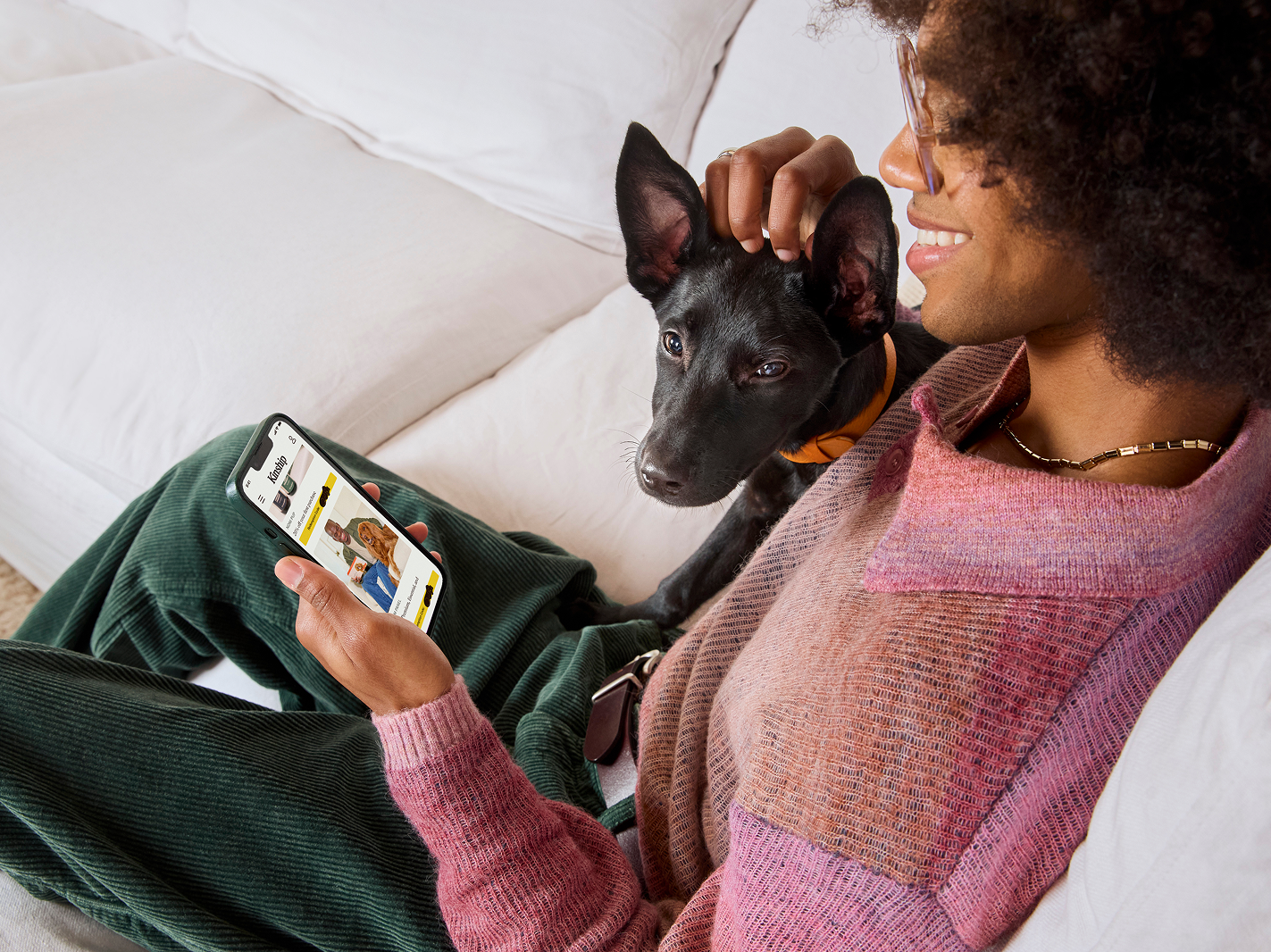
Get (totally free) deals for food, treats, accessories, tech and way more pet parenting must-haves.
Meet Boone, the 38in tall Irish Wolfhound, he’s about 7ft 10in tall when fully stretched out, and he weighs in at 86kg. When Kat moved over to the UK from the USA to live with her now-husband Ben, she had to get a custom horse box made for him to fly over in. “The bigger the dog, the bigger the heart,” smiles Kat over Zoom. Boone is standing between Kat and Ben, they’re sitting at a table and Boon’s head is peeking way above its top. Then he lollops down disappearing underneath. “He’s completely chilled out,” says Kat, “he has very low excitement levels. He’s not aggressive. He’s just calm as can be 24/7.” Ben concurs, “He’s a big loving hound.”
Boone turned five earlier this year and although it’s not verified, Ben and Kat reckon he could be the biggest dog in the UK. “There was some newspaper article about a bloke claiming he had the biggest dog – it was a Turkish hunting dog, like one of those only fed on raw meat – and I looked at his measurements and he was smaller than Boone,” says Ben. Which means, of course, everyone wants to know Boone when he’s out and about (sometimes what should be a 10 minute walk can take an hour and a half) from old women to small kids stopping to say hello. “The parents are obviously a bit wary, because he’s such a big dog,” says Ben, but then he also doesn’t really look real, he’s like a fictional character.” Kat agrees, chiming in that he often gets called Falkor from The Neverending Storyopens in new tab.
Both Kat and Ben warn, though, that you shouldn’t take bringing a giant dog into your life lightly. “Big dogs are expensive, big dogs mean big bills,” Ben says, “it’s a massive responsibility.” For the first year of his life, Boone ate about 16 cups of food a day (~2,000g), but now it’s around eight. Kat warns too that giant breeds can be finicky about food and Boone can go entire days without eating – “even if it’s something really good, he’ll avoid food if he’s not hungry.”
Boone has the best personality of any dog Ben’s ever met and Kat says that Irish Wolfhounds are Velcro dogs. “They want to be next to their person. 24/7,” says Kat. “If he can’t see you, it’s like it’s the end of his world. When he sits down, he needs to touch you, whether it’s his tail, his bum, something needs to be touching you.” Mostly, Kat says Boone has taught her patience. “It’s a sad thing to say, but big dogs don’t live quite as long,” she says, “so you have to take time out of your day to appreciate every minute you get with them.”
Follow Boone’s adventures on Instagram @irishwolfhoundinlondonopens in new tab
“I don’t want to promote giant breeds – I don’t think most people should have them”
Bruce and his partner Craig adopted Reggie after Bruce spotted an appeal on social media through giant breed rescue Saving Saintsopens in new tab. “He’d been bought from a St Bernard breeder for thousands of pounds by a family who wanted a pedigree pup but had no idea what they were letting themselves in for,” says Bruce. “He wasn’t socialised, never walked and then kicked out of the house.” Bruce says that they’ve had to work through some of Reggie’s aggression issues, “he’s not nasty but he was frightened”. Rosie joined the family a couple of years later, adopted through the same charity as Reggie, she’d been used as a breeding dog. “She’d never been in a house before she was dropped at ours,” says Bruce.
Reggie weighs in at 80kg and Rosie, about 47kg – both are finally healthy, as tragically Rosie had been just 27kg when she was rescued, while Reggie was overweight at 100kg. And now they’ve found their forever home, the dogs have transformed. “Rosie used to run and hide at the slightest sound,” says Bruce. “I look at her and think, ‘who has hurt you?’ Because she’s so loving – if she could get closer to she’d be part of your body.”
Bruce says that when they go out the pair of giant dogs attract a lot of stares, but he has to balance the “Oh my god, they’re lovely” with warning people not to come too close. “I’m not trying to be a dick, but my dogs don’t know you and they’re powerful,” says Bruce. Reggie wears a “Do Not Pet” harness – “it’s mostly for kids, as he doesn’t like kids,” continues Bruce, “I think there was an incident with the kids he used to live with.” And Bruce doesn’t want to promote having a giant breed – “because I don’t think most people should have them,” he asserts. “If you want this kind of dog, put in the research.”
On their personalities, Bruce says Reggie has the most dynamic character of any dog he’s ever come across. “He has me wrapped around his little finger,” says Bruce. “He’s got such a calming presence. After everything he’s been through, he’s got such a lovely, relaxed demeanour.” Rosie, on the other hand, “she’s a fucking nutcase,” laughs Bruce. “She makes ridiculous noises and she just wants to be in everything. If she hears a noise, she’ll come and investigate. If you’re on the floor doing something, she runs right up to you and throws herself at you to nuzzle in.”
“I like that she’s a big, gross girl”
Rachael jokingly calls Willow her “mini Great Dane”. “She’s quite petite for the breed,” says Rachael on Willow’s 40kg weight. Willow came into Rachael’s life just over seven years ago when she moved over to Austin, Texas from London. “I adopted her when she was just under a year old,” says Rachael. “When I met her, I fell in love. She’s got a very goofy puppy personality, people still think she’s a puppy and she’s eight years old now.”
On what it’s like to do life with Willow, Rachael says, “it’s like walking around with a celebrity.”
It’s hard to go anywhere without someone coming up to chat to her. “People are like, ‘Oh my god, your dog’s so cool’ or they call her beautiful or ask if they can pet her or they’ll have a story about growing up with a Great Dane.” In that way, Willow has helped Rachael make friends in a new place. “It’s a good conversation starter. The reaction is just excitement, people are stoked to see her. I mean, she’s a beautiful dog with cool markings and she’s big.”
Rachael says that Willow’s a gentle giant, but she’s definitely got a “naughty” streak. “She can turn up!” exclaims Rachael. “When she gets Zoomies, it’s intense, she’s buckled my legs before as I tried to step out of her way. At my birthday party, someone bought pastries and when no one was looking she stuck her head into the box. She pulled out five pastries and the paper and ate it all in one go.”
But Willow is “unequivocally” the love of Rachael’s life. “I love her personality. I love her confidence. Her silliness and all her quirks,” says Rachael. “I have a million nicknames for her, including ‘Gooey Duck’. She just kind of has a gooey face because her eyes are kind of droopy.” Rachael says that Willow has been a constant through some of the hardest times she’s ever experienced. “I couldn’t have done it without her,” she continues, “she was a reason to get up in the morning. When I couldn’t look after myself, I’d always look after her – I didn’t know what unconditional love was until I found this dog. She’s fun, she loves the beach and camping and hiking and chilling outside in the yard and shovelling dirt with her face, she’s just a pig, and I mean that in the most complimentary way, I like that she’s just a big, gross girl.”
Giant dog breeds – what you need to know
Woodgreen Pets Charityopens in new tab’s behaviour and training specialist Sue Ketland explains what you should consider before bringing a giant dog into your life…
Giant breeds cost more
“A bigger dog will cost more in day-to-day expenses like food, as well as things like grooming, pet insurance and any medication they may require,” explains Sue. “For example, a course of antibiotics would be significantly more for a giant breed than a small dog. It’s a good idea to cost everything up before making a commitment to a giant breed, so you know it’s something you can comfortably manage on an ongoing basis.”
It sounds obvious, but giant breeds take up more space
“When thinking about whether you have room for a giant breed in your home (and on your sofa), consideration should also be given to the size of your vehicle – as giant breeds can’t fit in many standard-sized cars,” explains Sue.
Giant breeds are slower to mature – physically and mentally
“Since it takes giant breeds longer to mature than small dogs, it’s important to carefully manage their exercise and protect their soft developing joints in order to avoid pain or injury. This often means no (or minimal) off-lead exercise for their first two years of life,” continues Sue.
“Slow to mature also means they’re puppies for a long time. While their bodies grow big and strong, it can take 2–3 years for giant dogs to reach emotional maturity. This means that they look like an adult, but behave like a puppy!”
Giant breeds are more prone to certain health problems
“Sadly, giant breeds rarely live past 8–10 years old. They are also highly prone to Gastric Dilatation Volvulus (GDV), whereby their stomach fills with gas and twists on itself,” explains Sue. “This is a life-threatening medical emergency and requires immediate veterinary intervention. If you own a giant breed, it’s a good idea to be aware of the signs – most commonly retching but not bringing anything up, a swollen and bloated stomach, and difficulty breathing.”
Training is non-negotiable for giant breeds
“Their bigger size means greater strength, and so loose lead training is essential for safely managing giant breeds,” adds Sue. “They will also need to learn how to be polite around people and dogs while they are young, as an unruly giant breed is no fun and very hard to handle. At Woodgreen, we recommend finding an ABTC-approved trainer to help you train your dog in a kind and effective way.”
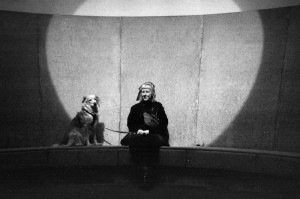
Alice Snape
Alice Snape is a freelance writer and editor whose work has featured in Cosmopolitan, Metro, Red, Vice, amongst other publications. Her rescue dog Lucy is the love of her life – probably because she’s an anxious weirdo like her. You’ll likely find them both curled up in bed – Alice’s favourite place to write from – or out having an adventure together in the park…
Related articles
![a woman with blonde hair sits in a park with two little dogs in sweaters jumping up on her]()
My Dog’s Long-Lost Sister Turned Out To Be... My Other Dog
When Julie and her husband rescued Betty and Bean, they had no idea the dogs were keeping a massive secret…
![Couple with a dog]()
5 Exes Who Co-Parent Their Pets & How They Make It Work
Breaking up is hard – especially with pets. Here’s how exes make co-parenting their four-legged friends work
![a woman sits on a bench with a dog]()
The Moment I Met My Dog: 5 People Share Their Pup Love Stories
“She’s taught me a love I never knew existed”
![a girl and a dog wearing birthday hats put their noses together]()
5 People Who Found Lasting Love With So-Called ‘Difficult’ Dogs Who Survived Trauma
“She senses my needs like I sense hers. I don’t know who I am without her.”
![Woman on sofa with laptop and dog cuddling]()
Meet the True Crime ‘Pet Detectives’ Chasing Down Animal Thieves
Pet crime is on the rise, but these vigilantes are on a mission to tackle it
![a woman holds up a dog with one eye they are both smiling]()
“Having a Dog is Way Better Than Dating” – 5 People Who’ve Swapped Partners For Pets
“I can rely on my cats to be there – no ghosting here – and, claws aside, they’ll never intentionally hurt me”


